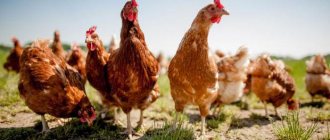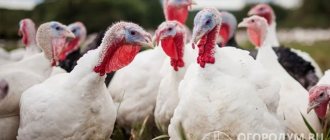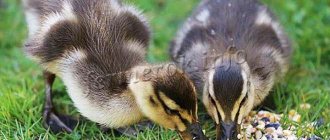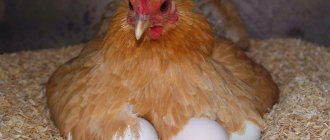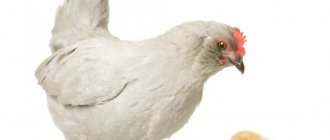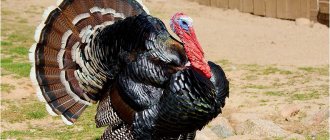High egg production of laying hens depends on a large number of factors. In many ways, these are unpretentious birds. However, when maintaining them, an inexperienced farmer may encounter many problems. If some circumstance interferes with peace and comfortable living, egg production decreases. Laying hens need to eat properly and balanced. Regularly bask in the sun. And lay eggs in cozy, specially equipped nests.
Winter feeding standards for laying hens
In winter, the conditions in the chicken coop for laying hens change, which negatively affects egg production. There is no walking under the sun, which means the birds do not get enough vitamin D. The light regime and the composition of the diet also change. To prevent a decrease in egg production in winter, it is necessary to supplement the basic diet with premixes and special vitamin supplements. Poultry farmers recommend supplementing purchased feed with food prepared with your own hands (food waste, grain).
Even the addition of vitamins, premixes, and food waste does not always guarantee high livestock productivity. An incorrectly designed menu can cause not only a decrease in egg laying, but also a deterioration in the quality of the resulting product.
To ensure that the egg production of chickens does not decrease in winter, experienced farmers recommend following feeding standards for laying hens. They consist of a number of points:
- Providing livestock with grain crops (60% of the total diet).
- Calculate the daily feed amount depending on the weight of the chickens. The heavier the bird, the more food it needs.
- When preparing a grain mixture, use various components (corn, wheat, rye, barley, oats).
- Supplement for exceeding the annual norm of eggs (normally 100 eggs/year are allowed per bird).
Feeding in winter differs from feeding laying hens in other periods. Farmers attribute this to the following factors:
- decreased mobility of chickens;
- reduced room temperature (the chicken coop needs additional heating);
- the inability of the livestock to obtain green feed and proteins.
Feeding in winter is carried out 2 – 4 times a day. The number of feedings is set by the farmer, depending on the following indicators:
- well-being of birds;
- breed characteristics;
- conditions of detention.
In the morning and during the day, it is recommended to give more greens, succulent food (grated zucchini, beets, pumpkin), and in the evening - dry foods. For better digestibility of vegetables, they should be given ground with grains.
In addition to vegetables, you can include green foods such as:
- branches of coniferous trees;
- dried nettle;
- oats, wheat (sprouted);
- hay.
Chickens spend almost all their time searching for food, which means they can eat all day. Overeating can negatively affect the well-being of livestock and its productivity. Laying hens must be given a certain amount of different feeds per day; exceeding the norm is not recommended.
Let us present to your attention an approximate daily diet for laying hens in winter. The amount of food is indicated in grams per individual.
| Type of feed | Product quantity (in grams) |
| Cereal beans | 55 |
| Grain-legume mixtures | 5 |
| Animal feed | 5 |
| Meals, cakes, yeast | 6 |
| Mealy feed | 20 |
| Herbal flour, hay, pine | 5 |
| Root vegetables, tubers | 20 |
To avoid negative consequences, monitor the quality of food your birds consume. You should constantly monitor the quality of feed. Mold and rotten pieces of food can cause the following pathologies:
- helminthic infestations;
- goiter blockage;
- intestinal infections.
Products with traces of mold, spoilage, and fermentation should not be allowed into food. Peeling vegetables in their raw form should not be given to chickens as whole root vegetables that have not been tested for food. Threads, film, and foil are not allowed in food waste.
Factors influencing egg laying rates
In chickens with high productivity, egg production may decrease. (Writing or saying “egg production” is incorrect).
The main reason is incorrect content. There are standards for diet, planting density, and climatic indicators. If they are violated, the bird becomes uncomfortable. And her productivity decreases.
With constant dirt in the chicken coop and a large number of parasites, the spread of infections cannot be ruled out. As a result, the chickens will stop laying eggs. And in advanced cases they may die.
For more details on why egg production has decreased or there are no eggs, see the article “Chickens do not lay eggs in winter and spring: why and what to do.”
A change in productivity indicator is possible due to physiological characteristics.
Egg production is affected by age. Chickens lay the maximum number of eggs from 6 months to 2.5 years. In some chicken varieties, productivity drops as early as 1.5 years.
Winter diet of chickens
A complete chicken menu is considered when the diet includes the following types of food:
- wet;
- dry (feed, grain);
- combined.
Increasing the egg production of chickens at home in winter is possible due to compliance with the conditions of detention, as well as proper preparation of the diet. For poultry to produce high egg production, it is important to have the following ingredients:
- Corn. It is recommended to give it crushed. This product is easily digested, but contains fat (6%), so it is given in limited quantities. Corn, like buckwheat, increases the amount of energy of laying hens.
- Wheat. The grains of this cereal contain a lot of protein, vitamins E, B. This protein product makes up approximately 60% of the feed.
- Barley. This product contains a lot of carbohydrates, but less protein, vitamins, and minerals than wheat and a hybrid of wheat and rye.
- Triticale. This hybrid of wheat and rye contains a lot of protein.
- Rye. This product is healthy due to its high protein content.
- Oats. This product contains a lot of fiber and fat. Steamed, sprouted oats have more benefits.
It is important to include wet food in your diet - a mixture prepared from the following products:
- cereals;
- greenery;
- buckwheat porridge;
- cakes;
- vegetables (raw, boiled);
- hay flour.
The mash is prepared from a mixture of certain products from the list and water or milk. Egg production increases due to the alternation of dry food and mash (combined nutrition). Fresh greens are also important for enriching the body with vitamins and nutrients.
Also in winter, birds need beneficial substances contained in:
- fermented milk products (cottage cheese, whey);
- fish oil, flour;
- products with a high percentage of calcium (shells, chalk, egg shells).
Sprouted grains
Oats, barley, wheat, and triticale are suitable for germination. The grains are poured with warm water for a day. Then they are transferred into a layer of 5-7 cm onto shields and mixed three times a day. Germination takes three days at room temperature. You can feed the product after the appearance of 5 mm sprouts. This additive accounts for 30-40% of the total daily amount of grain. If vitamin A deficiency is detected, the sprouts are allowed to rise to 6 cm. After this, they are cut off and given to the birds. The remaining grain can be re-moistened and you can get another harvest of greens.
Useful supplements for chickens in winter
In order to prevent the cessation of egg laying, but rather to increase the egg production of chickens in winter, birds are given foods rich in minerals. During the winter season, poultry needs calcium, which is sufficiently contained in the following foods:
- chalk;
- bone flour;
- salt;
- egg shells;
- shell flour;
- limestone.
Egg shells act as a source of phosphorus and calcium. It is given in the form of flour, fine crumbs. To make it suitable for use, the shell is washed, boiled, and dried in the oven.
Layers get chlorine and sodium from salt, but it is not recommended to overdo it with this product. Birds are given finely ground salt.
To ensure that all nutrients are better absorbed, birds are given gravel. Thanks to the pebbles, the feed mixes better inside the stomach of the chickens.
Farmers consider the following products to be useful additives for chickens:
- legumes To serve beans to laying hens, they should be boiled first;
- sunflower seeds, flax;
- meal, cakes containing a high percentage of protein.
You can prepare feed for laying hens yourself. It is recommended that the dry grain mixture or mash contain animal proteins:
- earthworms;
- fish and meat waste. You can use flour (fish, meat and bone). Fish and meat are given to birds after heat treatment, cold;
- dairy products;
- maggots (worms contain many vitamins and protein).
In order to have a lot of eggs, chickens are given vitamin supplements, which can be wheat germ or wheat bran. To prepare bran, dilute yeast (1 package) in water (10 liters), leave for an hour, then add bran. The top dressing will be ready after infusing for a couple of hours. You can give it to chickens once every 3-4 days.
The benefit of yeast is that it promotes weight gain and increases egg laying. The amount of this component reaches up to 5% of the daily feed requirement.
Choosing mixed feed
The finished feed includes wheat, barley, bran, soybean meal, vegetable oil, meat and bone meal and mineral additives. It has the appearance of small grains or granules. The calculation of the daily norm is as follows: 120-140 grams of feed are given per laying hen (if they are fed only with it).
The best feed for chickens:
- PC 1-2 M for laying hens from 20 to 47 weeks , manufacturer Bogdanovichsky Feed Mill.
- PK 1-2-3 M for laying hens aged 47 weeks and older , manufactured by Bogdanovichsky Feed Mill.
- HAPPY for laying hens , suitable for raising eggs from birth, manufacturer Purina.
- “Phase” compound feed for laying hens aged 20 weeks and older , manufactured by Purina.
- PK-1-0 for chickens from 17 to 20 weeks (preparation for egg laying), manufacturer Sverdlovsk Bakery Plant.
- PK-1-1 for chickens from 21 to 45 weeks , manufacturer Sverdlovsk Bakery Plant.
- PK-1-2 for chickens from 46 to 65 weeks , manufacturer Sverdlovsk Bakery Plant.
- PK-1-3 for chickens from 65 weeks , manufacturer Sverdlovsk Bakery Plant.
- PC 1/2 ERSH for chickens during the first laying period , manufacturer Ramensky Bakery Plant.
- PC 1-2 for chickens from 48 weeks , manufacturer Ramensky Bakery Plant.
When choosing feed, you need to pay attention to its composition and purpose. You should not feed chickens with products intended for broilers, pigs, cows, etc., as they may contain components that will lead to a decrease in chicken productivity.
Price: on average, from 25 to 150 rubles per 1 kg.
Note: you can give it either dry or soaked/steamed.
What to feed chickens in winter for egg production
To increase the productivity of laying hens, you need to know what to feed chickens for egg production in winter. After all, grain feed does not contain all the minerals and vitamins necessary for the body. To balance the diet, add greens, root vegetables, and vegetables.
Greens should be considered as a source of vitamins and a dietary product. It is useful to give livestock green mass from such plants. Greens dried for the winter practically do not lose their beneficial properties. In pureed form, hay is introduced into mash mixtures, and is also given in dry feed mixtures. You can hang a bunch of dried greens so that the hens will peck at them themselves. Enriching the diet with greens improves the birds' digestion. In addition, the egg yolks turn bright orange, and the egg tastes much better.
Root vegetables and vegetables can replace greens in winter and autumn. The bird is allowed to feed the following products (carrots, beets can be with tops):
- potato;
- cabbage;
- Jerusalem artichoke;
- carrot.
In the chicken menu, the listed products are present in chopped form. They are added to the mash. You can also simply hang the whole vegetable and place it on a nail. Birds will eat more food this way than trample it into the litter.
It is important not to overdo it with vegetables, otherwise laying hens may experience digestive upset. If you have exceeded the norm, fed more vegetables and noticed the appearance of diarrhea, stop feeding vegetables and root vegetables.
Vegetables
In the summer, chickens are often given vegetables from the garden. It is useful for birds to give potatoes, which should be boiled and chopped in advance. They also give grated beets, cabbage and carrots. Chopping vegetables is very important, otherwise you may harm the birds.
It is best to mix such crops with mash containing bran or cake. Sometimes a whole head of cabbage is hung on a small hook, and the chickens gnaw it off.
However, it is worth remembering that an excess of vegetables in a bird’s diet can lead to digestive disorders.
What to feed chickens for egg production in winter
Another way to increase the egg production of laying hens in winter is to provide the birds with warm water. In winter, as in any other period, it is important for laying hens to have access to clean water. The main difference from other seasons is the heating of water. It is recommended to water the bird in winter with warm water. Dirty water or ice in the drinker will negatively affect the performance of laying hens.
To organize a constant supply of fresh, warm water to the birds, install a special nipple drinker. Modern designs are equipped with a heating function.
conclusions
- High-quality productive characteristics of eggs are provided by egg or meat-egg breeds. They are capable of producing up to three hundred eggs per year for their owners, using a minimum amount of feed.
- The correct diet, recommended daylight hours, and comfortable temperature will help maximize the productivity of chickens.
- Dryness and cleanliness are the main criteria for ensuring the health of laying hens.
- When breeding chickens at home, you need to carefully monitor the characteristics of growing the selected breeds.
Which breed produces a lot of eggs?
If you want to get a lot of eggs, choose the right breed!
It is necessary to take measures to increase the egg production of poultry at the very beginning of the stage - when purchasing chickens. We will present several breeds of poultry that have good egg production.
Loman Brown
Representatives of this breed are distinguished by their calm character, high adaptive qualities, and rapid entry into the egg-laying season. On average, a hen Loman Brown can produce 320 eggs per year. But birds of this breed “age” quickly - already at the age of 1.5 years, laying hens sharply reduce egg production.
Leghorn
Leghorn chickens are record holders for egg production (the maximum recorded result is 371 eggs per year). The reproductive period in birds begins at the age of 20 weeks. The disadvantage of the breed is the bird’s timidity.
Hisex - Leghorn hybrid
The main advantages of highsex are high egg production (up to 300 eggs per year), resistance to low temperatures and diseases.



